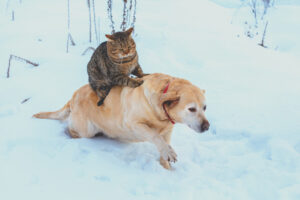
The mosquito in the winter in the snow
Are Mosquitoes, Fleas, and Ticks Still a Threat in the Northeast During the Cold Months?
As the cooler months approach in the Northeast, many people look forward to fewer pests, assuming that insects like mosquitoes, fleas, and ticks won’t be a concern anymore. While cold weather does significantly reduce their activity, these pests don’t completely disappear. It’s important to know what to expect from each of them as fall turns into winter.
Mosquitoes: Cooling Down, But Not Gone
Mosquitoes become less of a problem as temperatures fall below 50°F (10°C). These insects are cold-blooded, so they can’t function in the cold. By late fall, most mosquitoes in the Northeast will either die off or enter a hibernation-like state called diapause. The colder it gets, the fewer mosquitoes you’ll encounter.
However, there are some exceptions:
- On warmer days in the fall and early winter, mosquitoes might still come out of hiding.
- Mosquitoes can survive indoors in places like sheds or greenhouses, where the temperatures stay higher.
- Some species will lay eggs that stay dormant through winter and hatch when spring arrives.
Although mosquitoes are much less of a concern in cold weather, you might still run into them during unseasonably warm days or in warmer indoor areas.

Funny cat and dog are best friends.
Fleas: A Year-Round Issue for Pet Owners
While outdoor flea populations drop as the temperatures fall, fleas can survive and thrive indoors, especially in homes with pets. Fleas can hitch a ride inside on your pets and find a warm environment to live in all winter long. They’re particularly good at hiding in carpets, bedding, and furniture.
If you have pets, it’s important to continue flea prevention during the colder months. Here are some tips:
- Keep your pets on flea prevention medications year-round.
- Regularly wash pet bedding and vacuum carpets where your pets spend time.
- Even if your pet isn’t scratching, check for fleas to catch any potential infestations early.
Fleas may not be a major problem outdoors in winter, but they can easily turn your home into their winter hideout if you’re not careful.
Ticks: Still a Concern, Even in Cold Weather
Ticks, particularly black-legged (deer) ticks, remain active well into the cooler months. Unlike mosquitoes, which need warmth to stay alive, ticks are hardy enough to survive even when temperatures drop. In fact, adult deer ticks can be active in temperatures as low as 40°F (4°C), and they’re often out on milder winter days.
Ticks can transmit Lyme disease and other illnesses, so it’s important to stay vigilant if you’re spending time outdoors, especially in areas with tall grass or woods. To protect yourself and your pets:
- Wear long sleeves, long pants, and tick-repellent clothing when outside.
- Always check yourself, your children, and your pets for ticks after spending time outdoors.
- Keep your yard tidy by removing leaf litter and tall grasses where ticks like to hide.
Even though it’s colder, ticks can still be active, so it’s wise to continue tick prevention steps throughout the fall and early winter.
Conclusion
As the temperatures drop in the Northeast, mosquito and flea activity decreases, but that doesn’t mean you can completely relax. While mosquitoes are mostly gone by late fall, fleas can thrive indoors, and ticks remain active on warmer days, even in winter. Staying prepared and continuing preventive measures will help you avoid these pests and enjoy the colder months with fewer concerns.
Learn more from the CDC Guide to mosquitoes and ticks
